You’ve survived Mayan prophesy. Now survive our year-end listicle.
So you survived the Mayan apocalypse and made it through the holidays. Well, congratulations. But you know as we do that death won’t be cheated for long, and when it comes for each of us, well, that’s as much apocalypse as any one body can handle.
So that brings us to how we clung to our own miserable lives throughout this year with Roads & Kingdoms. Matt and I are not war reporters, though we did nibble on the fringe of several hot and cold wars—the civil war in northern Burma, South Africa’s live-fire war against its own working class, Denmark’s alcoholic war on its own liver, and more. The dangers we have faced while traveling, reporting and eating dodgy street food since we launched Roads & Kingdoms wouldn’t amount to an hour in Aleppo. But still, we know what we know and have lived what we’ve lived. We know, for example, that the best way to stave off thoughts of unavoidable doom is to browse through online listicles. So here is a list: the top ten hazards that we’re glad to have survived in 2012. Note that this list doesn’t include the real or perceived dangers to all our fine contributors—Jonathan Hanson being bled on by muay thai fighters, Daniel Howden and Nastasya Tay braving Mogadishu in order to get some ice cream, Oliver Bullough eating more chili paste than any Englishman ought to. But they can make their own lists. Here’s ours:
10. Angry Catalans
Location: Barcelona
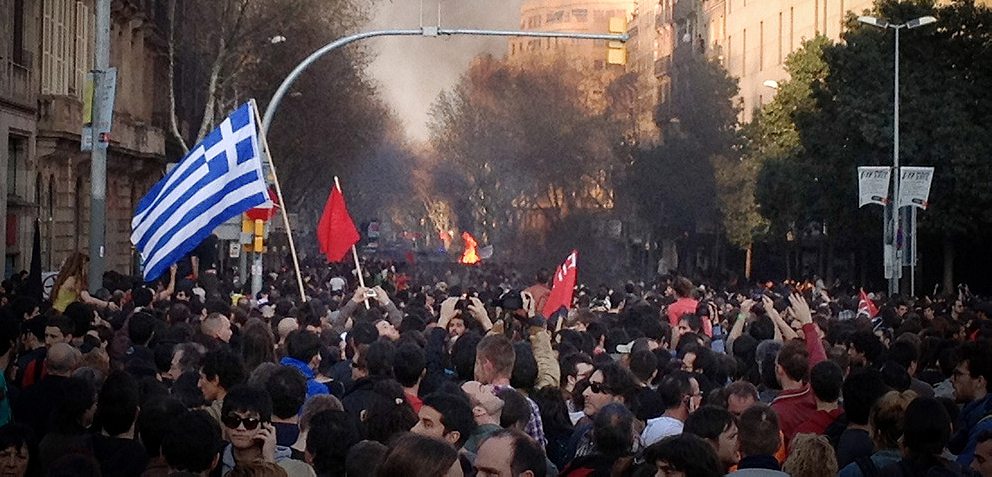
Matt returned home to Barcelona from Peru only to find his adopted city ablaze with Euro-rioting. Plaça de Catalunya was the center for the striking indignados, some of whom hurled molotov cocktails at police, lit cars on fire and made sure to smash in the windows of every Starbucks in their path. “What I saw in Barcelona makes the Occupy Wall Street movement seem like a campfire singalong,” he said at the time. Kumbaya, tío, kumbaya.
9. Warlike Danish Children
Location: Near Copenhagen
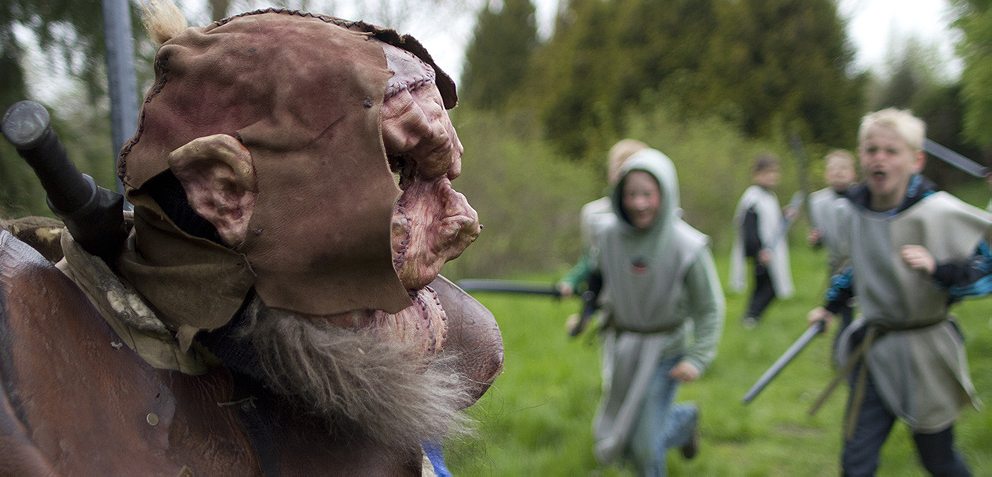
From Something Wicked This Way LARPs
My Roads & Kingdoms co-founder Matt Goulding was the first into the fray. Earlier in the morning he was an ogre, which meant he had put on a rubber mask with a heavy burlap suit that stank of years of larp-sweat. The kids had been bused in from central Copenhagen, handed brightly colored tunics, and given a Braveheart speech of sorts. A Rollespilsakademiet organizer named René Bokær Pedersen was in full warrior mode, yelling at the kids not to touch the swords yet, that first he was going to line them all up and hit each of them very hard (“I think he’s kidding,” whispered Rasmussen, though she later explained that one of the first things she learned as a larp leader was that kids like to be hit harder with the foam weapons than you think). Once they were pacified, the middle-schoolers were led in six groups to several stations, each with its own scenario and its own vaguely pedagogical purpose.
Matt’s station was meant to teach the kids courage, which means he ambushed them from a dense wood, roaring and swinging a massive foam pike. Time and again, the groups that had been looking for this monster turned heel with real fear when he came lumbering from between the trees, growling and smelling like a thousand gym socks. And it was also supposed to teach them compassion, because they would then be shown that Matt’s ogre had a dagger stuck in his back, and once they took the dagger out, he would stop being so angry.
My chance came at the end, in the final battle of the day: kids versus adults. There were a dozen of us against a hundred, but we adults poured bravely over a ridge as the kids assembled below. By the end of the morning, the weaponry and the exercise had transformed these children from undifferentiated mumbling adolescents into their truer selves: hellions, heroes, cowards, and even some psychopaths. After my death in battle—a meek death that Raasted would surely have blamed squarely on my own lack of physical gifts—I lay flat on the grass, the international death pose. Rasmussen was nearby, also prone.
And then, from the middle of this church group, some bleed. One corpse robber of a kid tried to take my shield from me as I lay there, and as he did, another came up and tried to bludgeon me in my nether regions. These children of Danes, that gentle race of men, suddenly had the wild, wide eyes of horses in danger. “HaHA!” said the boy as he brought his foam sword down on my crotch. And then, in the first English I had heard from the kids all morning: “Fuck you, asshole!”
8. Bad Crab
Location: Rangoon, Burma
Rancid crab slathered in chili sauce. I survived this, unhappily. Best to just watch the video.
Flashback, Burma Day One: Bad Crab from Roads and Kingdoms on Vimeo.
7. Cliff Diving
Location: Syracuse, Sicily
The Ionian Sea north of Syracuse is such an emerald color, and the sun and the cliffs so inviting, that visitors are compelled to do what the locals do: jump off high rocks into cool waters. Matt did so. Here he is:
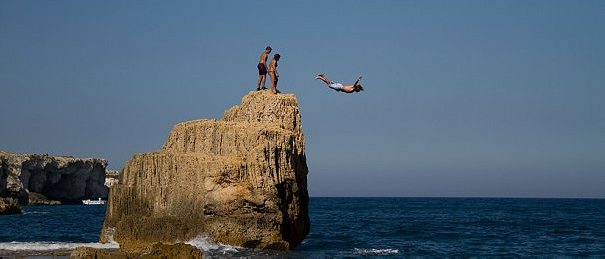
I watched him doing this. And then, something like a warthog who envies an eagle in flight, I tried to do something nature never intended me to do, and I threw myself from the same height. The end result was this (what you can’t see is the auburn-haired Sicilian girl who took the picture while saying with a sense of genuine wonder—oh, you are not very good with pain, are you?):
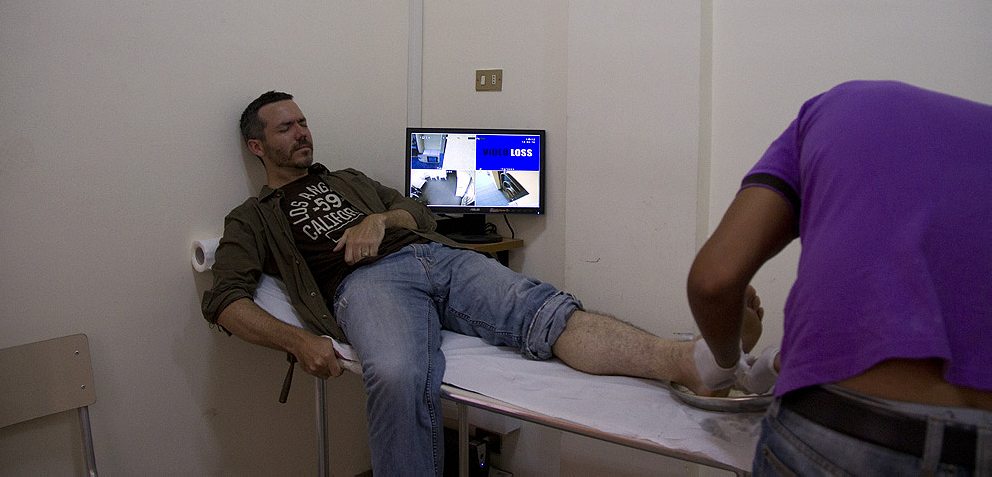
The wound was deep, and the sprain persistent, but both healed after a few weeks. The humiliation? That lasts forever.
6. Scandinavian Drinking
Location: Aalborg, Denmark
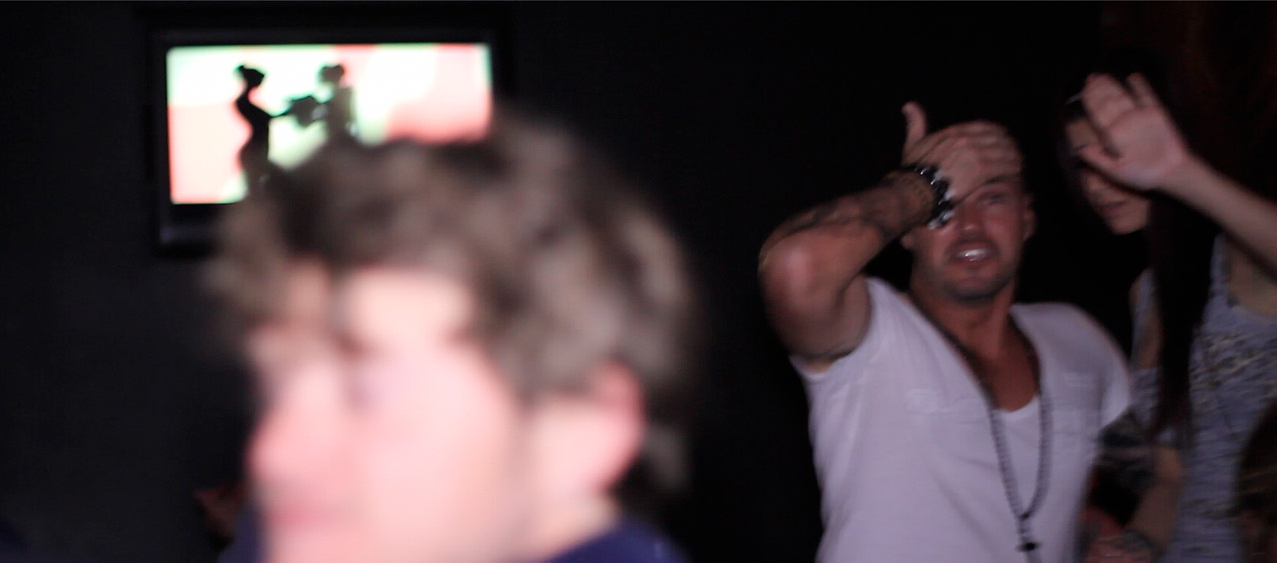
Denmark’s drunkest virgin is doubtless the Virgin Anne Street (Jomfru Ane Gade), a 150 meter strip of liquor-vendors in the Jutland industrial city of Aalborg. The Danes are among the hardest-drinking of all Europeans, and Aalborg is the home of Akvavit, their hardest liquor. But even Aalborg residents get a liver workout on Jomfru Ane Gade.
Jomfru Ane Gade has a little something for everyone: you can get shots of cheap tequila for a euro in one bar, while next door there’s coke in the bathroom of a roped-off VIP section where tech entrepreneurs down bottles of Cristal. In order to protect our sources, Matt and I won’t say who did what where to whom, but as the sun rose on our night out, we realized—far too late—that we were mere amateurs among these Danes.
5. Myanmar Air Travel
Location: The skies above Kachin State, Burma
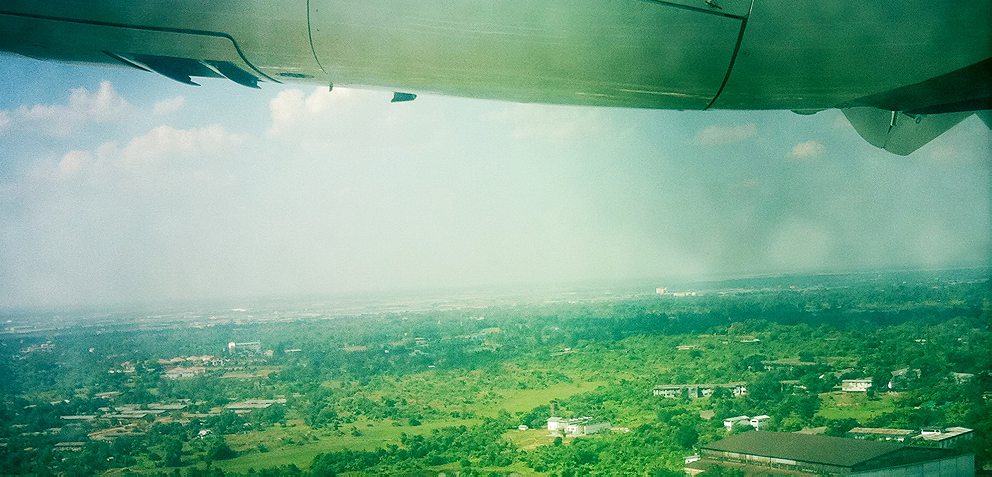
Air KBZ seemed like a good enough airline, with comely stewardesses, seats that recline and hot tea served carefully. The two Air KBZ flights I took passed more or less uneventfully from Rangoon to Mandalay to Myitkyina. Considering that Myitkyina is the army’s northern outpost in the Kachin civil war, the flight may have been the safest part of the whole trip.
And yet.
Air KBZ is an uniquely Myanmar company, a sort of cronyopoly under the wing of the Kanbawza Industrial group which is a subsidiary of the delightfully named Myanmar Billions Group. It’s the kind of name you choose for your company if you’re the kind of man that owner Aung Ko Win is: a friend of crooked generals, a man elbow-deep in the jade-sapphire-ruby-gold trade, a man whose ties to the junta have landed him on international blacklists. None of those qualities promise Teutonic efficiency in airline management, and sure enough, two months after my flight, an Air KBZ plane crashed upon landing in Thandwe. It was the same type of plane—an ATR-72-500—that I was on, and although it’s not certain, there’s a decent chance that it was the exact plane I was on: there are only three aircraft in all of Air KBZ’s fleet. Yet another private Myanmar carrier, Air Bagan, had one of its planes crash this week near Inle Lake, and it just has us thinking of all those little rides in all those little planes in all those little countries that have passed for us, somehow, without incident.
4. Abalone Gangsters
Location: Hawston, Western Cape, South Africa
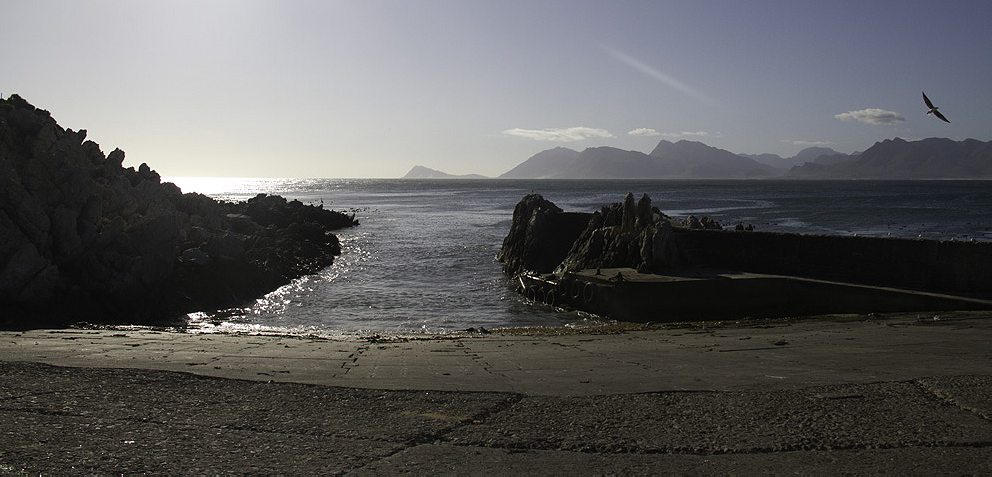
The picture of the jetty above is missing something important: the speeding Zodiac full of adrenaline-doped abalone gangsters that had been there not five minutes before. Yes, that’s abalone gangsters. Illegally caught abalone is a cash crop for drug gangs that stretch throughout South Africa. They smuggle the mollusks to China—it seems to always be China when it comes to rapacious seafood habits, doesn’t it?—and in exchange, they get the chemical ingredients needed to manufacture meth in the Western Cape.
Small wonder, then, that these gangs can be heavily armed, and even the poachers, who come from seaside towns like Hawston and are often just frustrated and unemployed fishermen, take this trade very seriously. Matt and I went to Hawston to report this story (we’re still working on the piece) because Hawston had been the site of a fiery standoff in which one poacher died in police custody and the rest of the town proceeded to torch the police station and several police vehicles.
Within minutes of our arrival at the jetty—we had come, really, just to look around—a Zodiac buzzed around the rock toward the dock, a beat-up sedan pulled in front of us, and without even tying the boat off, four fierce-eyed men had take heavy sacks of abalone off the Zodiac and thrown them into the truck of the car. They all jumped back into the boat or the car and sped off. It felt like a bank heist, because it was.
Were we wrong not to have scrambled to take a picture? We got differing answers on that question later on. But enough people said, ya, they probably woulda shot you, that we feel okay about having left it all a word-picture.
3. Hallucinogens
Location: The jungle outside of Iquitos, Peru
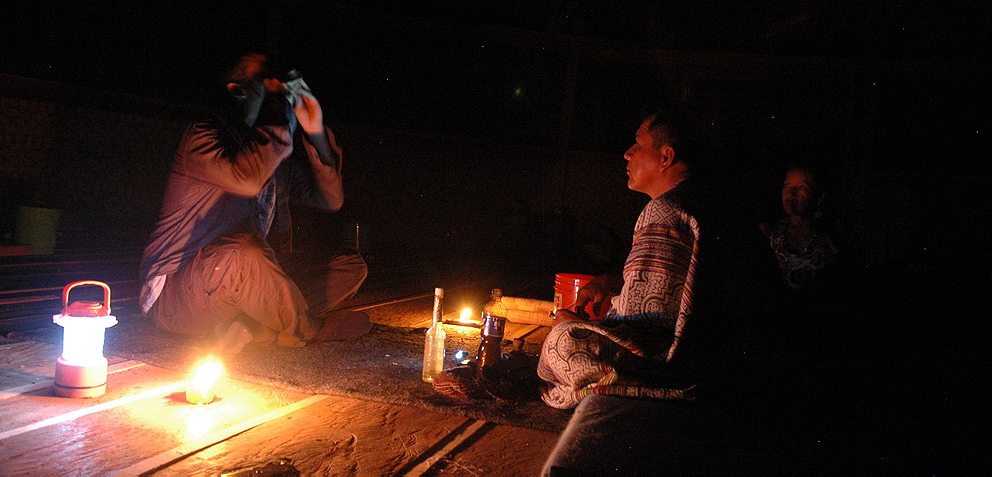
No, these are not Mayans. And they are not prophets of doom, but rather, in the parlance of backpackers, “medicinal healers”. But the Shipibo shaman that I sought out in the Amazon (while Matt was being cavity-searched on the other side of Peru) might as well have been a sorcerer, bringer of fire and apocalypse, stallion that mounts the dying world. Because his ayahuasca—the ancient hallucinogenic mixture of resin and vines that I’m downing in the picture above—absolutely floored me.
I’m sure if you Google ‘ayahuasca’ and ‘death’, you’ll find some stories about the few tourists who met some unfortunate end while down in Peru for ayahuasca ceremonies. I am also sure that in the right hands, the drug feels as safe or even safer than aspirin. But I’m not that interested in litigating the safety record of shamanic compounds. Mainly I want to say that I did survive, and was almost deliriously happy to have done so, and that I also saw the future, and the cosmos, and my dead ancestors, all out of the corner of my eye.
2. Drug-seeking airport security
Location: Cusco Airport, Peru

From Matt’s This Just Happened in Cusco
Body cavity search. These three words haunt me like a festering sore everywhere I turn. I’ve been detained at the Mexican border, threatened with a hair follicle test in Vietnam, and stuffed in a box at the Argentina-Chile crossing, with three nice fellows on hand to help me undress. The latest incident went down just now, here in the Cusco airport, where upon settling into line at the Peruvian Airline counter, I was immediately plucked from my position by an undercover policia. This was no random inspection; this was a gringo shakedown.
How do I know this? Because his first question wasn’t “Do you have any drugs?” but rather, “where are the drugs?” With this friendly welcome he proceeded to tear my suitcase, my computer bag, then finally me apart. I’m generally nervous around these types, but that feeling was exacerbated by the fact that on the very top of my suitcase sat a huge bag of coca leaves—the only thing that keeps a guy like me ticking at 12,000 feet. The cop didn’t think twice about the coca (after all, it’s perfectly legal in these parts). What bothered him were the chocolate bars, the large box of Roads and Kingdoms business cards (“Que es Roads y Kingdoms Señor Goulding?”), and, above all, the set of kitchen tongs I tend to travel with. No Officer Gomez, it’s not a giant roach clip; I just like to cook.
1. The Mafia Dons of Catania
Location: Catania, Sicily

From Catania, All Dressed Up, Nowhere to Go
The long, scythe-shaped road called Via del Plebiscito leads up the hill from the church of the Cappuchini and, there, on a curve in its middle, is a two-block open-air street food market that at 1 in the morning on a Saturday night is full of people who have been drinking all night, including a few who drive by slowly singing out of the windows of Fiats and a few who come to eat loudly, with the urgency of drunks.
But those are not the people you need to worry about. Instead, you should be concerned that table of older men, staring dourly at the carnival, receiving the occasional visitor and drinking only espresso. That’s because, when you arrived with a camera, two foreigners and one Sicilian, someone came hustling out from the kitchen of this place and said, there are people here who don’t want their picture taken. A good deal of negotiating took place, which left your one Sicilian a little flustered—“this is what I don’t like about Sicily. I won’t say the word, but you know what I’m talking about. There is no law here, no law.”
The word, of course, is mafia, still only spoken when one can’t be overheard here.
Why negotiate to stay at a street stand with plastic chairs and plastic tablecloth and sit next to glum Mafiosi who do not want you there? Because the stand is packed, the grill is firing, and the meat is ready. You are going to eat the one thing that Via del Plebiscito is famous for: horse meat.
But first, the waiter comes and winks at you conspiratorially. They are all crazy, the wink says, I am happy to have you here.
That is, I think, what this year has been about for me and Matt. For every mafioso, there was a mensch. And that mensch invariably served us horsemeat. Or noodles with chili peppers. Or open-faced Danish smørrebrød. We’re glad to have survived 2012, but we’re also a bit sad to see it go. It was, as they say, a very good year.
—
Now that you’ve indulged us indulging ourselves, please consider donating to The Committee to Protect Journalists. Just follow that link. It’s easy, and by doing so you’ll help support the people who fight for every journalist—whether they cover conflict or corruption or even sports (yes, a Brazilian sports radio host was assassinated this year). This has been a tragic and bullshit year for journalists who are actually under fire, and they need the CPJ now more than ever.